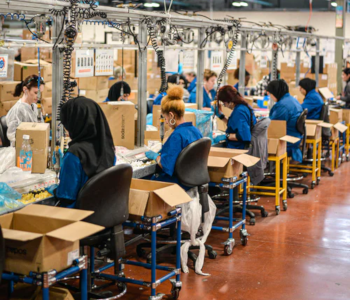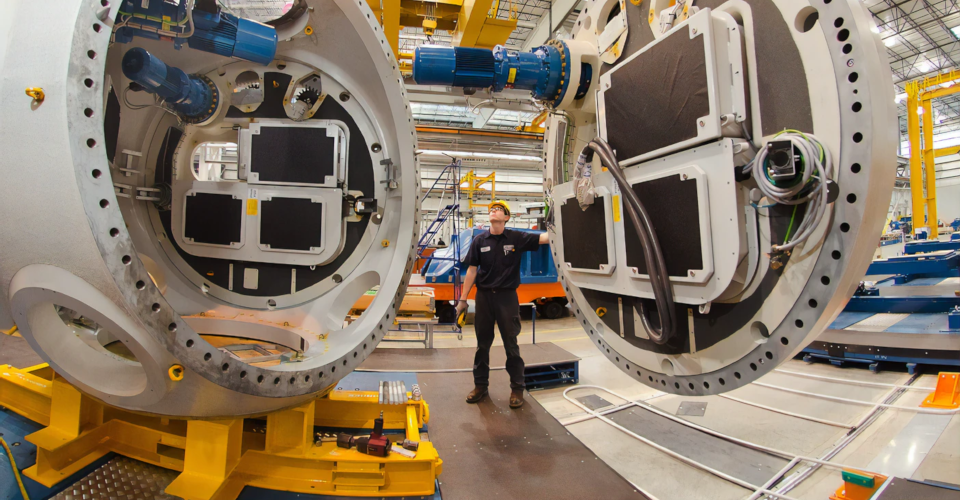Sustainable Manufacturing – What It Is and Its Business Benefits
Nowadays, sustainability is no longer just a buzzword – it’s a legitimate business strategy. A lot of factors have colluded to create this trend. Modern businesses have been incentivized to adopt sustainable practices through tax breaks, reduced operational costs, and better customer engagement. There is also the innate benefit of reducing the environmental footprint of your operations.
What exactly is sustainable manufacturing and how important is it in today’s business environment? What will it take for a manufacturing process to be considered truly sustainable?
What is sustainable manufacturing?

As the term implies, sustainable manufacturing refers to manufacturing practices that are aimed towards reducing environmental impact. The United States Environmental Protection Agency more elegantly defines it as “the creation of manufactured products through economically-sound processes that minimize negative environmental impacts while conserving energy and natural resources.”
The need for sustainable manufacturing has come about mainly as a response to changing buyer behavior. There is now a demand for green products created through so-called “green manufacturing.”
The competitive advantage of being more sustainable can no longer be ignored by businesses. According to a study done by the NYU Stern Center for Sustainable Business from 2015 to 2019, more than half (54.7%) of packaged consumer goods purchased within the study period were considered sustainable products. Another study done by Accenture indicated that 45% of consumers now consider sustainability in making shopping selections.
In some cases, sustainable manufacturing practices can have benefits that affect more than the bottom line. Workers become happier and more motivated when their values align with those of the company. Sustainable practices can also create conditions that enhance the safety of the workers as well as those of nearby communities.
Considering all the benefits, there is no longer any question that sustainable manufacturing is the way of the people. It’s one of the things that can give a business a competitive edge in the modern customer-driven market.
Sustainable manufacturing strategies
There isn’t a single method to achieve sustainability for a company. Finding the most effective one will depend on a company’s specific industry and their current technologies. However, certain general guidelines can help.
Assess your current status
Making any meaningful change starts with taking a long, hard look at what you are currently. This can involve doing an audit of your regular energy consumption, the waste you are generating, or how much water you need for your operations.
Basically, any aspect of manufacturing operations that has an impact on the environment could be possible points for improvement. Does your process use toxic chemicals or are your products packaged using single-use plastic? Is there a chance to use recycled water or to do treatment of wastewater within the facility? At this stage, no change is too small. Even incremental steps can turn out to have huge effects on the environmental footprint of a manufacturing process.
Do a Life Cycle Assessment of your output and processes
An LCA (Life Cycle Assessment) is a tool used in sustainable manufacturing that looks at the whole life cycle of a product, service, or process to assess its environmental impact. This involves looking at the raw materials, the energy spent during manufacturing, means for distribution, and the waste generated by the manufacturing process.
The LCA paradigm has been long established and has been integrated into many ISO standards that are applicable to the manufacturing industry. If you are yet to do an audit of your processes, then the LCA approach is a perfectly valid and comprehensive strategy. It starts by doing a qualitative analysis of all material and energy inputs to your manufacturing process.
LCA also requires assessing the impact of each stage of the process on the environment. Finally, all learning from the LCA will be used to come up with recommendations to make a process more sustainable. Ideally, corrections should be proactive rather than reactive in nature.
Reduce energy and water use
Just about any manufacturing process at an industrial scale uses heavy amounts of energy and water. This energy can come in the form of either heat or power. Just reducing the use of both energy and water resources is already a huge help in making a process more sustainable.
There are several ways to reduce energy use. If your process relies on maintaining heat for long periods, then adding insulation to process vessels and pipes can help reduce heat loss. You can also do facility-wide replacement of older light fixtures with low-powered LED alternatives. Maintaining proper lubrication of moving parts can lessen the load on motors and generators and help decrease power consumption.
A study has found that it is very common for large manufacturing facilities to suffer from water loss due to leakage in distribution lines. To avoid this, periodic inspection and repair of water lines are recommended. Coordinating with the local water distribution company can also help in identifying large spikes in water use.
Reduce waste where possible

Part of an environmental assessment is looking at the waste streams of a manufacturing process. Does your company frequently have an excess of raw materials which have to be disposed of? Are there any toxic chemicals that go into the wastewater of the facility? Is there any available technology for this wastewater to be treated?
Waste reduction also ties into utilities such as electricity and water. The company may consider cutting down on working hours, especially for administrative functions. One cannot underestimate the amount of electricity and water that is consumed by administrative offices during normal operations.
In some cases, shifting to different technologies may be necessary to achieve the desired level of waste reduction. For example, additive manufacturing (such as 3D printing) produces much less waste compared to subtractive manufacturing (such as lathing or milling). Labeling products via laser marking eliminates the need for inks and dyes, which often involves the use of petroleum-derived solvents.
Again, a material and energy audit of the manufacturing facility will come in handy when looking for opportunities for waste reduction. Small efforts are still considered valuable, especially if they can be done at no extra cost. A shift in manufacturing technology will require huge capital but also tends to generate the highest yield in waste reduction.
Use sustainable packaging
For manufacturing companies producing consumer goods, shifting to sustainable packaging is one of the best opportunities to reduce their environmental impact. It also works from a marketing perspective, as it vastly improves the image of a company.
The first rule of sustainable packaging is to do away with single-use plastic. This is the single most significant source of solid waste over the past several decades.
Nowadays, there are biodegradable alternatives for just about every type of packaging material – plastic films, bags, Styrofoam, even packing peanuts. Another option is to use recycled instead of virgin plastic or to use a material that blends both virgin and recycled plastic.
However, it is also important for a company to provide education to consumers. Just because a sheet of plastic is biodegradable does not mean that it can be safely composted in someone’s backyard. In most cases, biodegradable plastic still needs to be broken down in the controlled environment of an industrial manufacturing facility.
Consider using shifting to renewable energy
One of the most impactful transitions that a manufacturing company can make is to shift to a renewable energy provider. This can be a massive boost to a company’s image and can heavily reduce the facility’s environmental footprint.
Large-scale manufacturing facilities can take their pick from solar, hydropower, wind, or geothermal power providers. As the technology for harnessing renewable energy sources improves, the cost of renewable power has also become more competitive. Also noteworthy are developments in battery technology, allowing energy storage for non-baseload power sources such as solar and wind.
Shifting to renewable power will typically involve signing a contract with a renewable energy provider. Signing long-term contracts can be a good way to secure favorable power rates.
Business benefits of sustainable manufacturing
For businesses, making the shift to sustainable practices isn’t just a decision based on morality or conscience – it can improve business performance in several ways.
Better company image
One of the most profound of shifting to sustainable manufacturing is that it can improve the company’s image. This goes for stakeholders, state regulators, and the buying public.
According to a recent study, 30% of consumers in the US are willing to pay a premium for products that can deliver on promises of sustainable practices. Moreover, 37% of consumers consider sustainable practices when making buying decisions.
There are now several global organizations that award and recognize companies that adopt sustainable practices. These awards provide a significant boost to the image of a company, potentially giving it access to financial aid, tax breaks, and other corporate benefits.
Lower operational costs

Contrary to popular belief, going sustainable does not mean spending more. Reducing power and water usage alone can already generate huge savings for any manufacturing process.
The cost of waste treatment and disposal is something that many manufacturing facilities tend to overlook. This can be significant for companies that require the treatment of toxic chemicals or those that need to pay third-party services to do so. This is a compelling reason to shift to technologies that generate virtually no waste, such as laser marking and additive manufacturing.
Tax breaks
In some countries, governments incentivize sustainable practices by providing tax breaks to qualified companies.
Generally, these green tax credits are granted for companies that use energy-efficient equipment or renewable power to reduce the reliance on fossil fuels. These can effectively offset any investments that may have gone towards shifting to renewable power or a more efficient alternative to your current equipment.
There is no shortage of companies that have successfully reduced operational costs through the use of green tax credits. In New Jersey, the Smart Start Buildings program provides up to $4 million cash grants for investments made to enhance energy efficiency in industrial facilities. In Georgia, renewable power providers can sell their power directly to manufacturing facilities without any sales and use taxes.
More motivated workforce
One also cannot underestimate the positive effect on workplace morale of a manufacturing facility adopting green practices. This is especially true among the crop of young workers – mostly millennials who want to work with companies that are socially and environmentally responsible.
A more motivated workforce is also one that is more productive. Positive morale leads to reduced employee turnover, reducing the expenses on manpower acquisition and training. For those working on the manufacturing floor, positive motivation also leads to safer practice and reduced safety-related incidents.
Aside from possible capital investment and an ever-present resistance to change, there is practically no downside to shifting to more sustainable manufacturing practices. The biggest hurdle for any company would be changing its own culture, especially for older companies with long-established processes.
Some sustainable manufacturing examples
1. US-based outdoor clothing and gear company Patagonia has been fairly successful in establishing itself as a brand dedicated to sustainability. A controversial ad published in Black Friday 2011 kickstarted the company’s drive to make their gear as durable as possible to lessen their contribution to solid waste. Moreover, Patagonia offers free repair services and hosts a commerce platform for second-hand Patagonia clothing.
Patagonia has also enacted smaller changes including the use of solar panels in their facilities, smart grids for controlling lights and heating, and recycled materials for insulation. Even the water used in toilets and gardens is regulated by sensors to control consumption.
At the corporate level, Patagonia also maintains a sustainable image through donations to environmental organizations and fighting for fair treatment of workers and gender equality. All of these efforts have contributed to a cohesive branding for Patagonia which has served to differentiate them in a competitive market.
2. Canada-based Calstone is a company that designs and manufactures metal furniture products. In 2007, the company undertook efforts to reduce the environmental footprint of its products in response to a more environmentally conscious customer base.
Among the company’s efforts was to use a vapor spray system to deliver degreasing chemicals to metal components. This reduced chemical usage by about 60%. They have also installed solar panels on the roof of their facility on top of buying 10 MWh of electricity per month from a hydro and wind power provider.
To minimize the environmental impact of their products, Calstone launched a program that allows them to take back any of the furniture they have sold so that components can be reused or recycled.
3. US-based Rapid-Line is a company that specializes in metal fabrication and tooling. After experiencing an increase in power usage from 2002 to 2005, the company undertook an effort to make its operations more sustainable.
Among their initiatives was the use of automated controls and added insulation to make their operations more heating. Excess heat from their ovens was captured and redirected for space heating during winter. They also conducted regular inspection and monitoring of ovens to identify heat leaks so that they can be repaired and right away, avoiding unnecessary heat loss.
The cumulative result of their efforts resulted in a reduction of natural gas consumption by 125,000 cubic meters – equivalent to $46,000 annually.
Final thoughts
Sustainability is no longer just a trend for modern manufacturing trends – it is a legitimate strategy for securing a competitive edge. More important than the savings that a company can get in operational costs, adopting sustainable manufacturing practices can help a company develop a favorable image for its customers.
There have already been several success stories of companies around the world that have embraced the sustainability paradigm. Despite the many perceived benefits, perhaps the biggest hurdle for this movement is the natural human penchant to resist change.


Thanks for sharing this fantastic article. Code and Pixels is an IETM level 4 and S1000D development company that delivered 25 projects. Interactive Electronic Technical Manual (IETM) range from Level 3, 4, and 5.